eXtensible Access Control Markup Language (XACML) Part 2
Review
XACML
- OASIS standard
- Federate administration of policies about the same resource
- XACML Core Specification
- attribute-based access control policy language
- implemented in XML
- default attributes and functions
- language to express access requests and responses
- policy evaluation process
- high-level architecture (PEP, PDP, PIP, PAP, etc.)
- attribute-based access control policy language
XACML Architecture
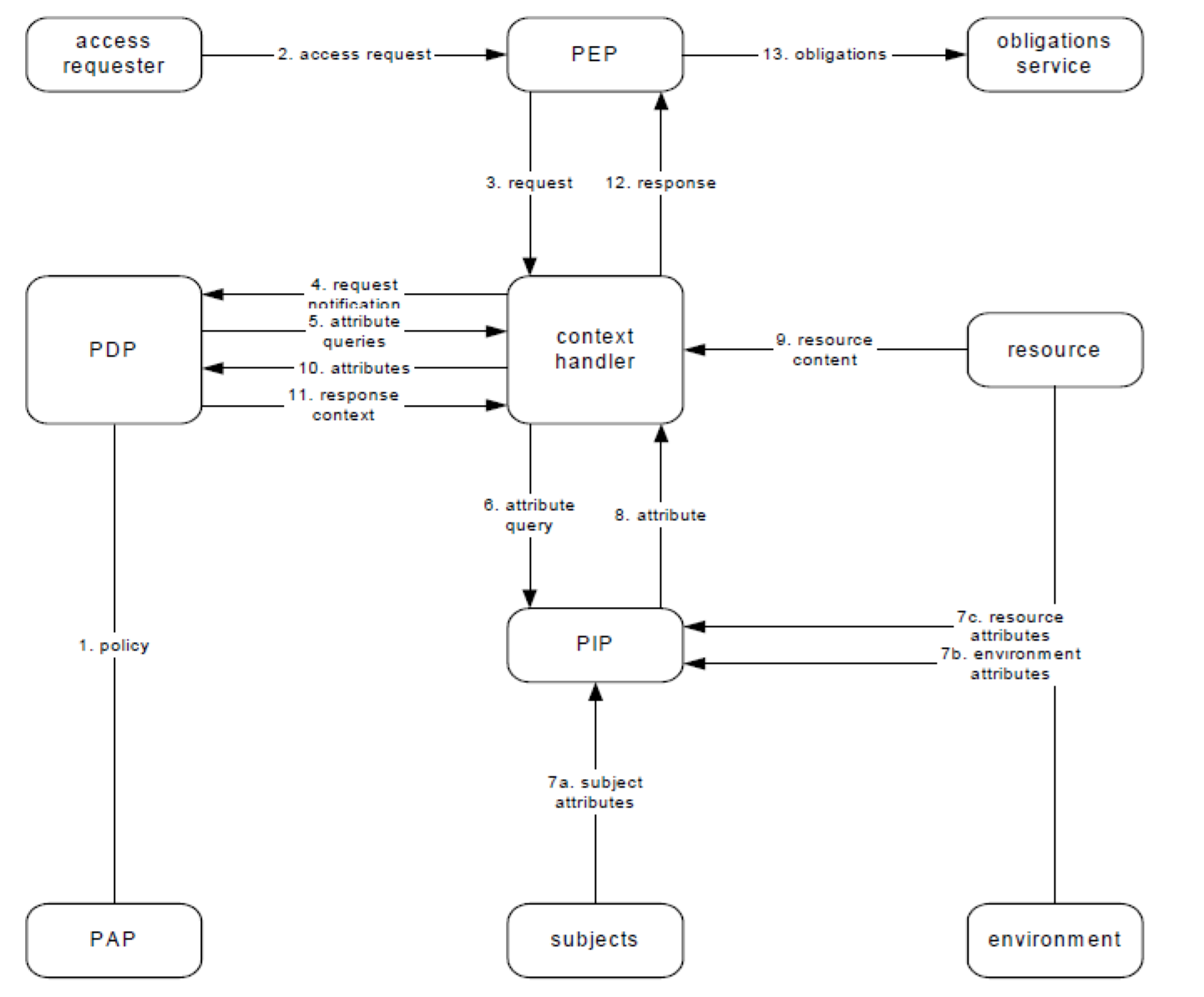
XACML Policy Model
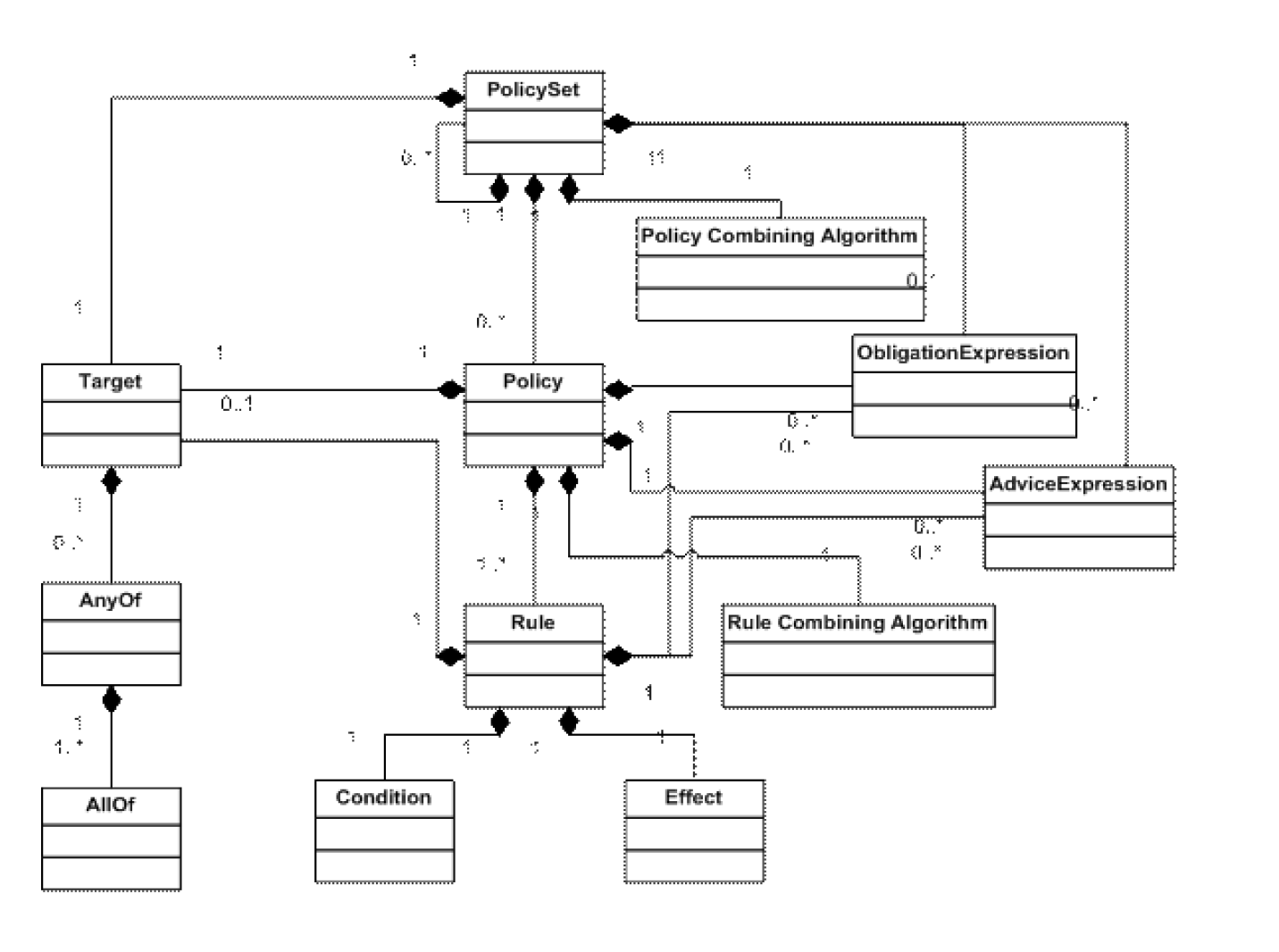
Access Request & Policy Applicability

Access Requests specify a context
- Attributes of subject, object, action, environment
A Rule/Policy/PolicySet has a target
- Attributes of subject, object, action, environment
Rule/Policy/PolicySet is applicable if the attributes in the accessrequest “match” the attributes in the target
Access Decision
- Permit: requested access is permitted
- Deny: requested access is denied
- Indeterminate: PDP is unable to evaluate the request
- NotApplicable: PDP does not have any policy that applies to the request
REMARK: Attributes in the target have attribute MustBePresent. In case that no matching attribute is present in the request, then the attribute is considered missing. If the attribute is missing, then MustBePresent governs the applicability of the Rule/Policy/PolicySet
- If MustBePresent is “False” (default value), then a missing attribute results in “NotApplicable”
- If MustBePresent is “True”, then a missing attribute results in“Indeterminate”
Extended Indeterminate Set
Record potential effect value when errors occur
- Indeterminate{P} (I{P})
- Indeterminate{D} (I{D})
- Indeterminate{PD} (I{PD})
Used by some combining algorithms
Decision Set Projection
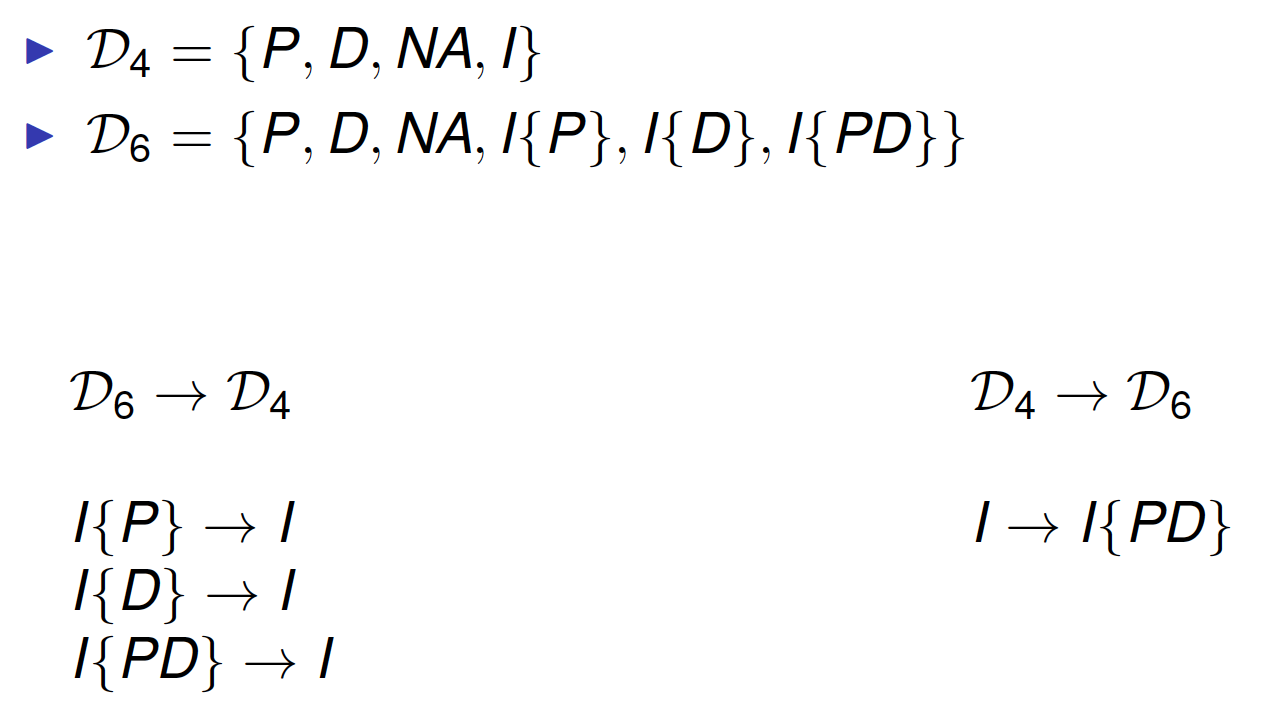
Combining Algorithms
Deny-overrides
Ordered-deny-overrides
Permit-overrides
Ordered-permit-overrides
Permit-unless-deny
Deny-unless-permit
First-applicable
Only-one-applicable
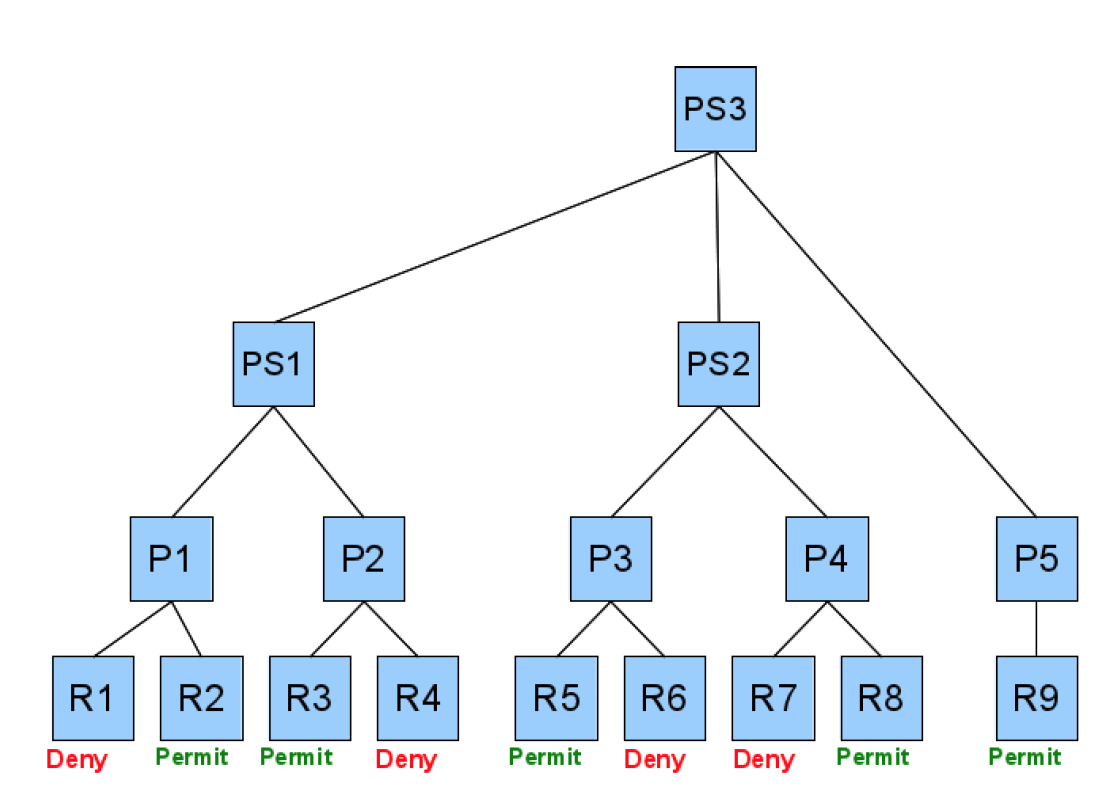
Obligations
- In XACML post obligations
- A policy or policy set may contain one or more obligations
- Obligations passed up to the next level of evaluation
- No obligations are passed up
- if the policy or policy set is not evaluated
- if result is “Indeterminate” or “NotApplicable”
- if effect does not match FulfillOn attribute
Response

- Access Decision
- Obligations
Outline
- RBAC Profile
- Privacy Profile
- Exercise
RBAC Profile
RBAC
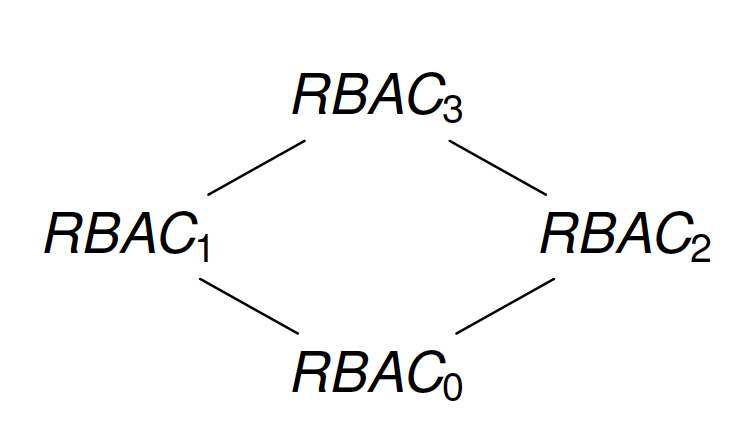
Facilitate policy specification and management
RBAC0
- Roles based on job functions
- Users assigned to roles
- Permissions assigned to roles
RBAC1 = RBAC0 + Role hierarchy
- RBAC2 = RBAC0 + Constraints
- RBAC3 = RBAC1 + RBAC2
RBAC0
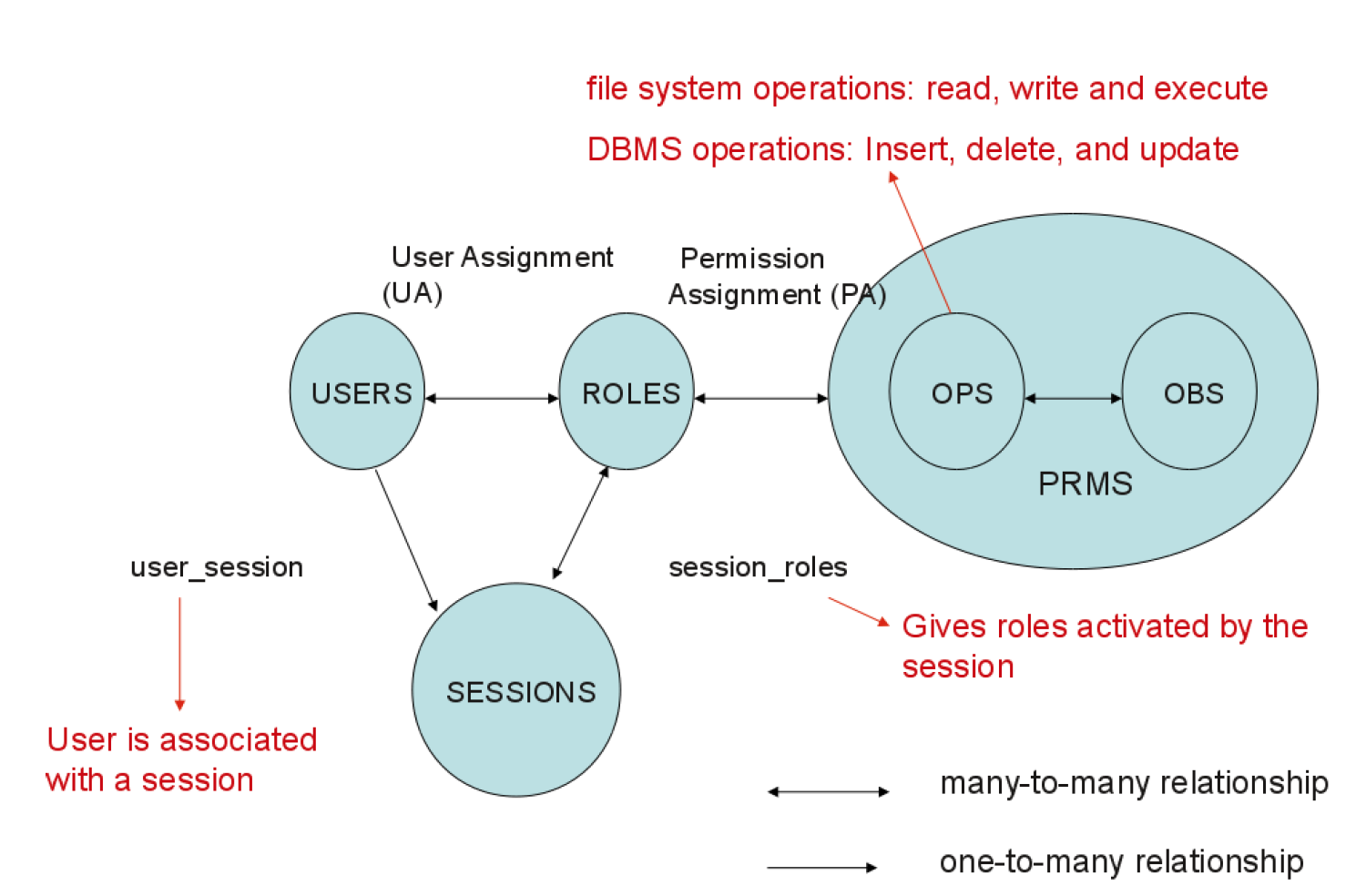
RBAC1
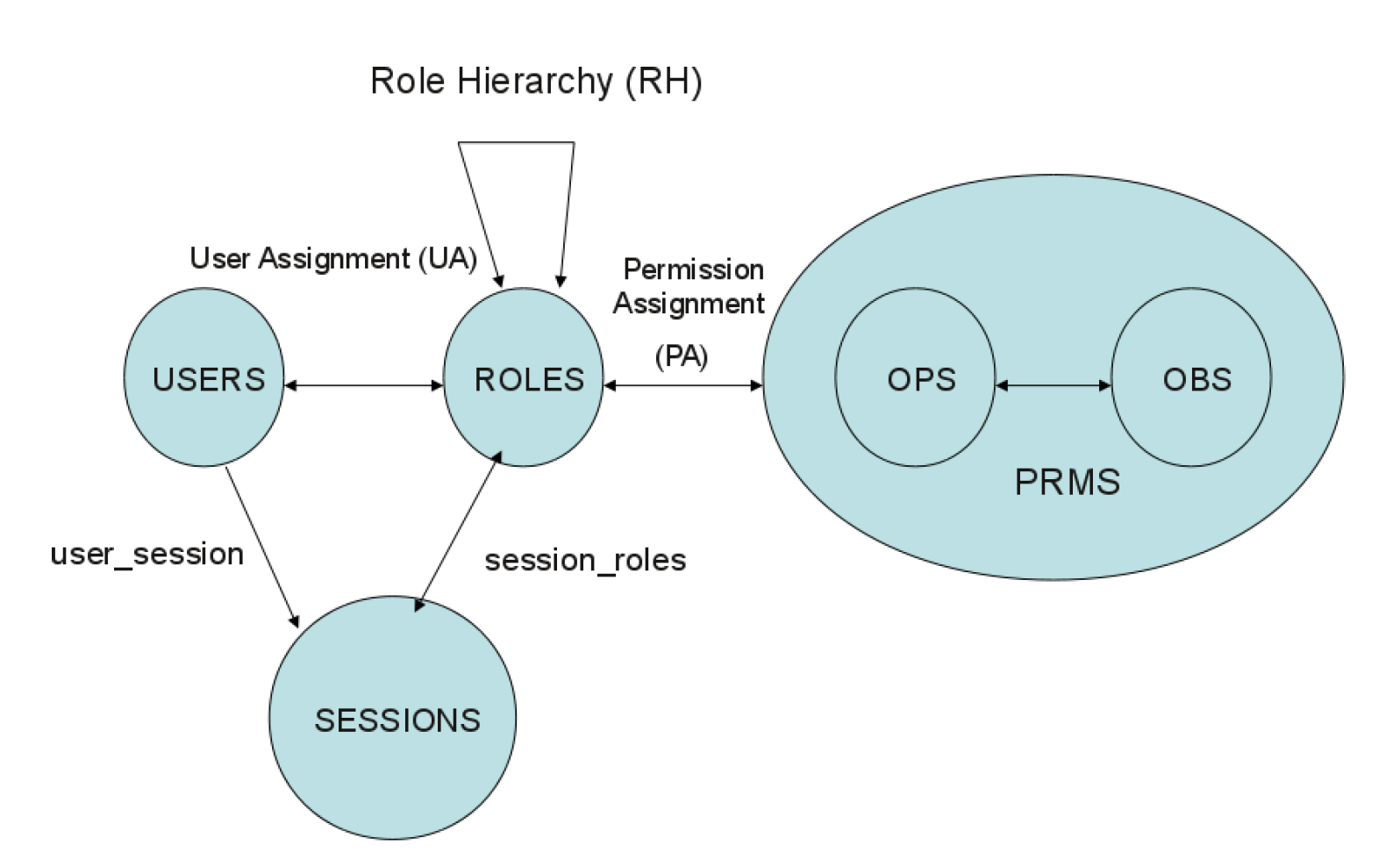
RBAC Profile - Scope
RBAC profile answers three types of questions:
- If a subject X has roles R1,R2, …,Rn enabled, is X allowed to perform a given action on a given resource?
- Is subject X allowed to have role Ri enabled?
- If a subject X has roles R1,R2, …,Rn enabled, does that meanX will have permissions associated with a given role R'?
- In other word, is role R' either equal to or junior to any of roles R1,R2, …,Rn?
NOT supported
- Separation of Duty
Policies in RBAC Profile
Role: < PolicySet > that associates permissions with a role
Permission: < PolicySet > that define permissions
Role Assignment: < Policy > or < PolicySet > that defines which roles can be assigned to a subject
- Actual assignment of roles to users outside scope of XACML PDP
HasPrivilegesOfRole: < Policy > in a Permission< PolicySet > that supports requests asking whether a subject has the privileges associated with a given role
RBAC0 in XACML
User expressed using XACML Subjects
Roles
- Single attribute identifier and an attribute value for each role(recommended)
- urn:oasis:names:tc:xacml:2.0:subject:role
- An attribute identifier for each role (empty value)
- urn:someapp:attributes:employee-role
- Same representation within a policy domain
Objects expressed using XACML Resources
Operations expressed using XACML Actions
Permissions expressed using Permission < PolicySet >
Permissions-Role Assignment expressed using Role< PolicySet >
Role < PolicySet >
Determine whether a subject holds a certain role
- < Target > of Role < PolicySet > limits the applicability of the < PolicySet > to subjects holding a ceratin role
- Each Role < PolicySet > references a single Permission < PolicySet >
- No contain or reference any other < Policy >or < PolicySet >

Permission < PolicySet >
Define the permissions associated to a certain role
- One Permission < PolicySet > for each role
- Permission < PolicySet > contains < Policy > and < Rule > elements that describe the resources and actions that subjects are permitted to access
< Target > MUST NOT limit the subjects to which the < PolicySet > is applicable
- including contained or referenced PolicySet/Policy/Rule

Example
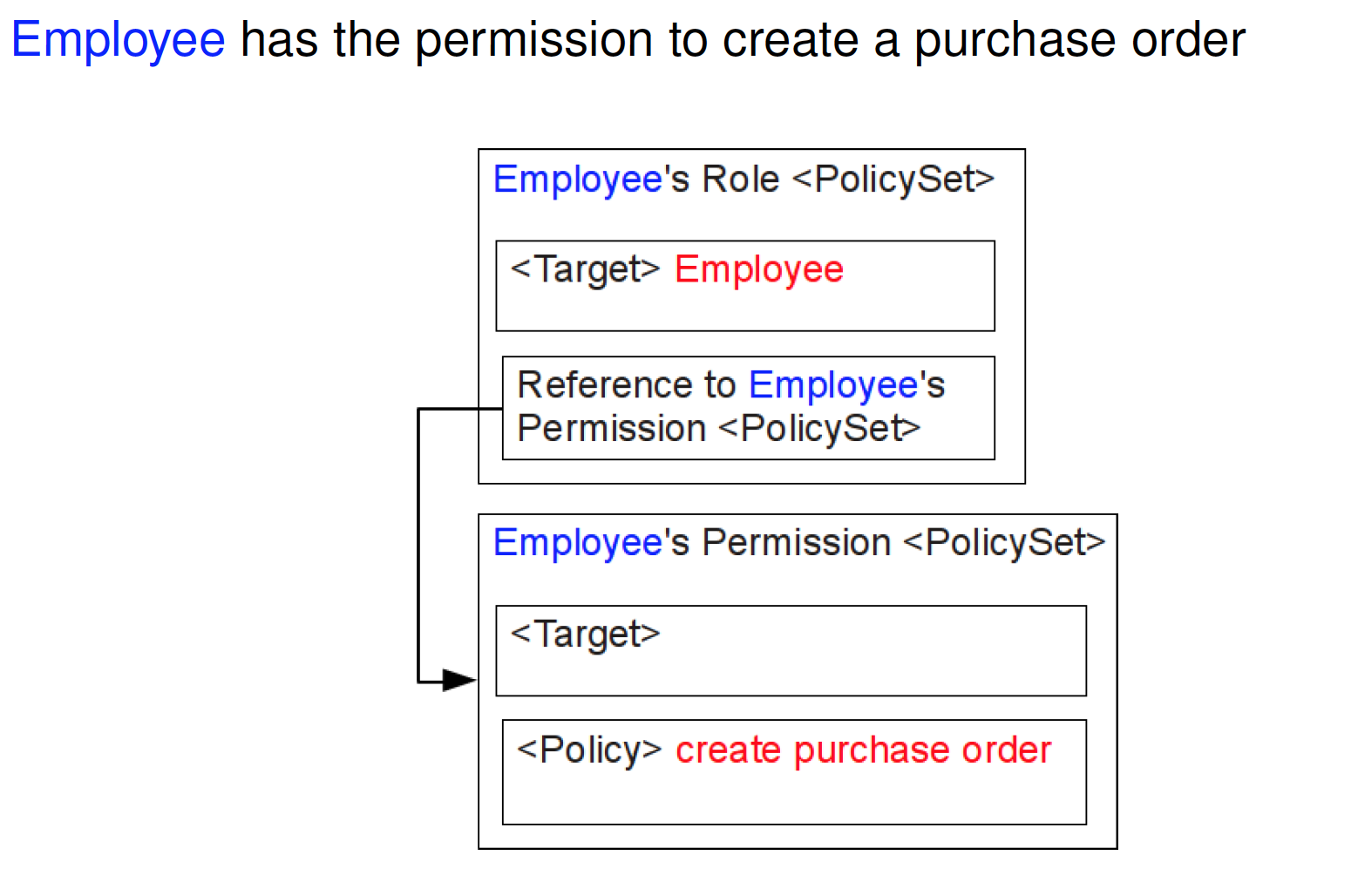
Role < PolicySet > for employees

Permission < PolicySet > for employees 
Evaluation
Permission < PolicySet > cannot be used as initial policy by PDP
Permission < PolicySet > MUST be reachable only through the corresponding Role Permission < PolicySet >
- To support inheritance, Permission < PolicySet > must be applicable to any subject
RBAC1 in XACML
Role inheritance defined by policy structure
Permissions associated with one role includes permissions associated with more general roles
Permission < PolicySet >
Define the permissions associated to a certain role
- One Permission < PolicySet > for each role
- Permission < PolicySet > contains < Policy > and< Rule > elements that describe the resources and actions that subjects are permitted to access
- < Target >, if present, MUST NOT limit the subjects to which the < PolicySet > is applicable
- including contained or referenced PolicySet/Policy/Rule
- Permission < PolicySet > MAY also contain references to Permission < PolicySet >s associated with other roles that are generalizations of the given role
- Inherit all permissions associated with the role of the referenced Permission < PolicySet >
Example
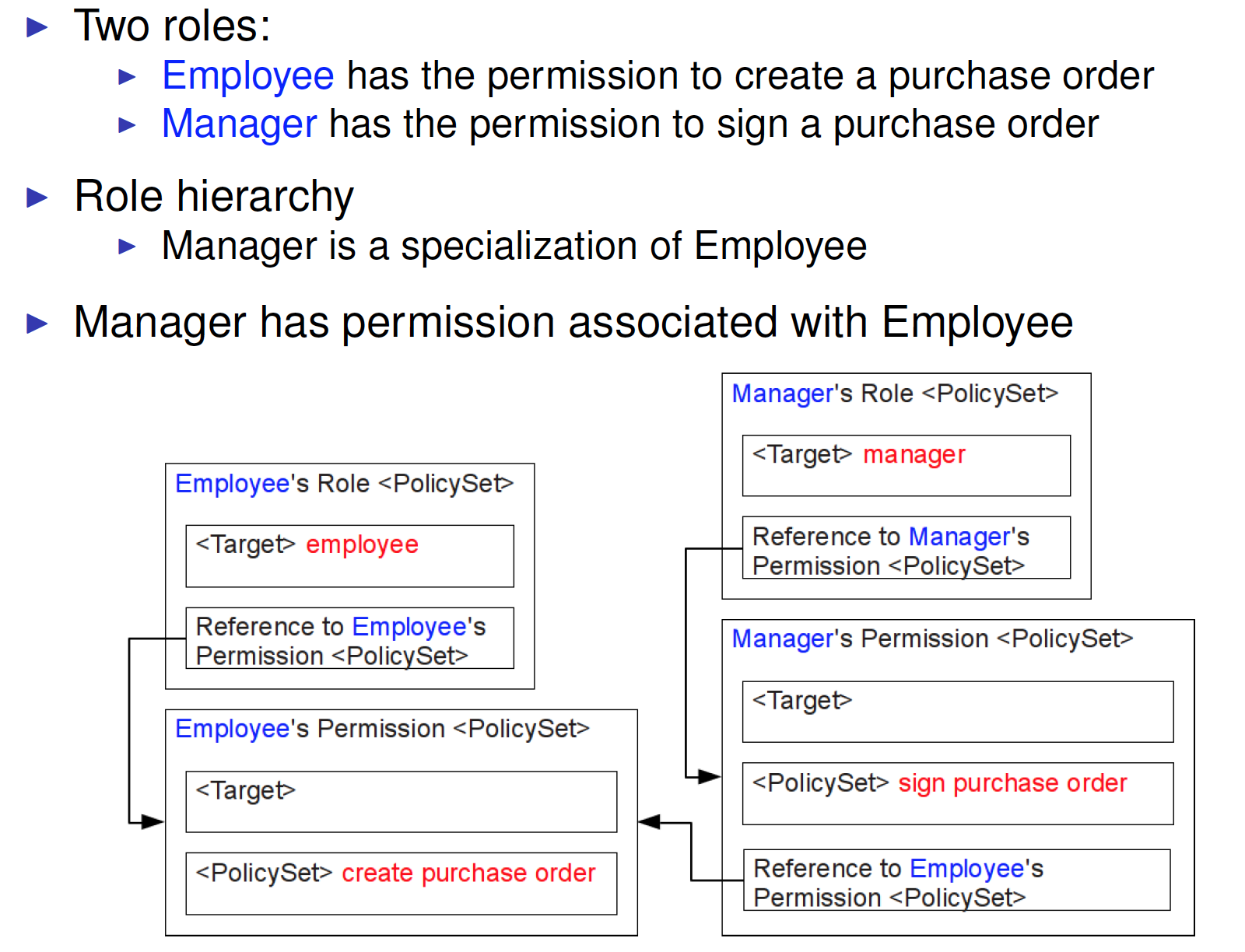
Multi-Role Permissions
A user must hold several roles simultaneously to gain access to a certain permission
- < Target > of Role < PolicySet > requires specifying all roles
- a single < AllOf > element containing multiple < Match >elements
- Associated Permission < PolicySet > specifies permission associated with subjects who have all role enabled
- Associated Permission < PolicySet > may refer to Permission< PolicySet >s associated with individual roles
- All necessary roles have to be specified in Request context
Subjects has the permissions associated with
- each role individually
- multi roles
HasPrivilegesOfRole < Policy >
Used to allow queries asking if a subject “has the privileges of” a specific role
Included in a Permission < PolicySet >
If this type of request is to be supported, then a HasPrivilegesOfRole < Policy > MUST be included in each Permission < PolicySet >

HasPrivilegesOfRole < Policy > for managers

HasPrivilegesOfRole < Request >

Privacy Profile
Privacy-aware Access Control
Access control policies include Subject ,Object ,Actions
Privacy-aware access control policies also include
- Purpose: the intended use of data
- Obligations: mandatory requirements to be fulfilled
- Conditions: restrictions under which a policy is applied
Privacy Profile
No element for purpose
Two optional purpose attributes:
- urn:oasis:names:tc:xacml:2.0:resource:purpose
- purpose for which data were collected
- urn:oasis:names:tc:xacml:2.0:action:purpose
- purpose for which data are requested
No purpose hierarchy
Matching purpose
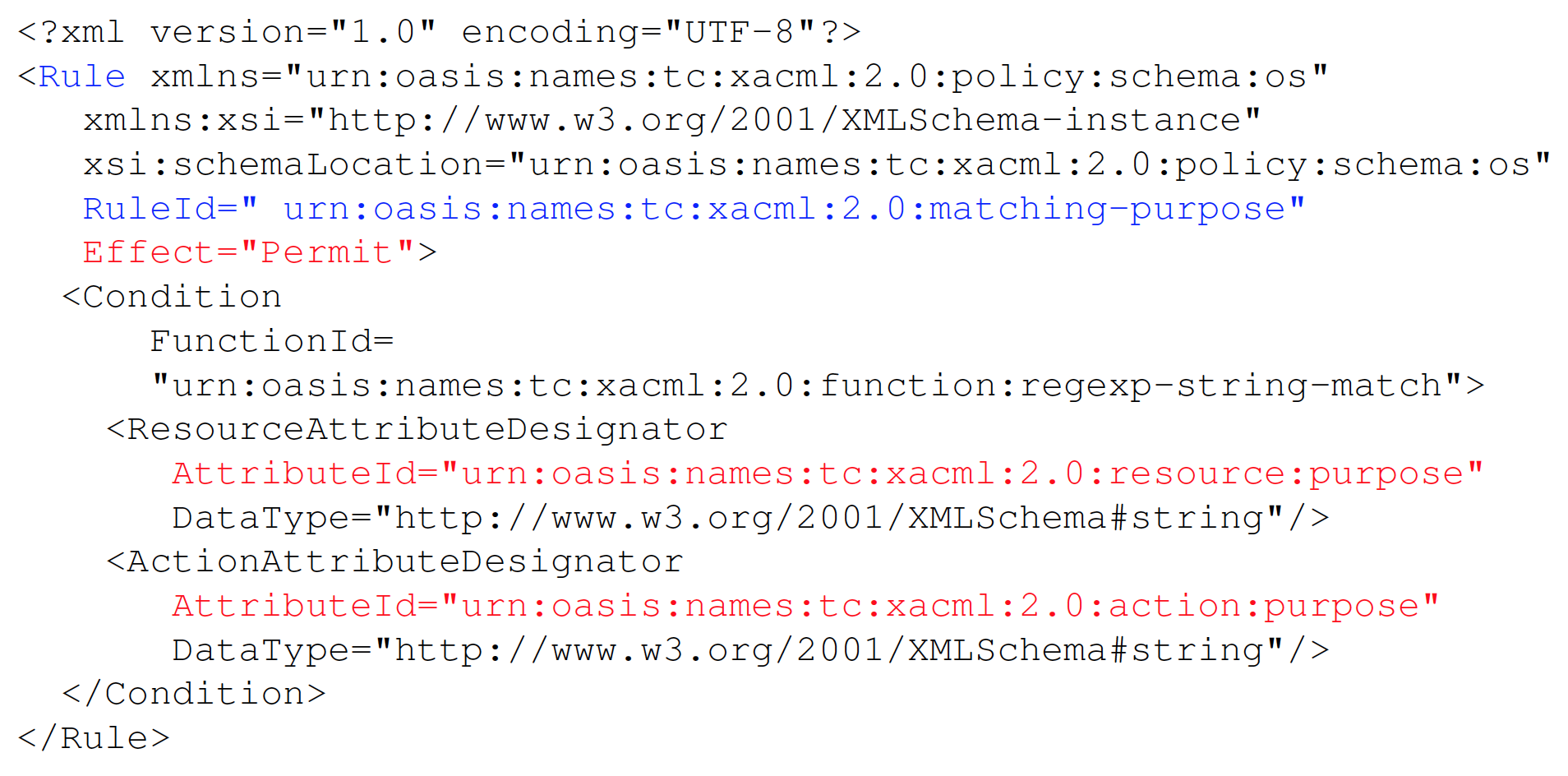
XSPA Profile
Cross-Enterprise Security and Privacy Authorization (XSPA) Profile of XACML v2.0 for Healthcare
- Healthcare Treatment
- Emergency Treatment
- System Administration
- Operations
- Payment
- Research
- Marketing
- Public Health
Summary
XACML can be extended to cope with specific issues
- RBAC profile
- Privacy profile
- Others
- XACML v3.0 Administration and Delegation Profile Version 1.0
- XACML v3.0 Hierarchical Resource Profile Version 1.0
- SAML 2.0 Profile of XACML, Version 2.0
- XACML v3.0 XML Digital Signature Profile Version 1.0
Exercise
References
eXtensible Access Control Markup Language (XACML) Version3.0 http://docs.oasis-open.org/xacml/3.0/xacml-3.0-core-specos-en.pdf
XACML v3.0 Core and Hierarchical Role Based Access Control(RBAC) Profile Version 1.0 http://docs.oasisopen.org/xacml/3.0/xacml-3.0-rbac-v1-spec-cs-01-en.pdf
XACML v3.0 Privacy Policy Profile Version 1.0 http://docs.oasisopen.org/xacml/3.0/xacml-3.0-privacy-v1-spec-cs-01-en.pdf
Cross-Enterprise Security and Privacy Authorization (XSPA)Profile of XACML v2.0 for Healthcare (Committee Draft)